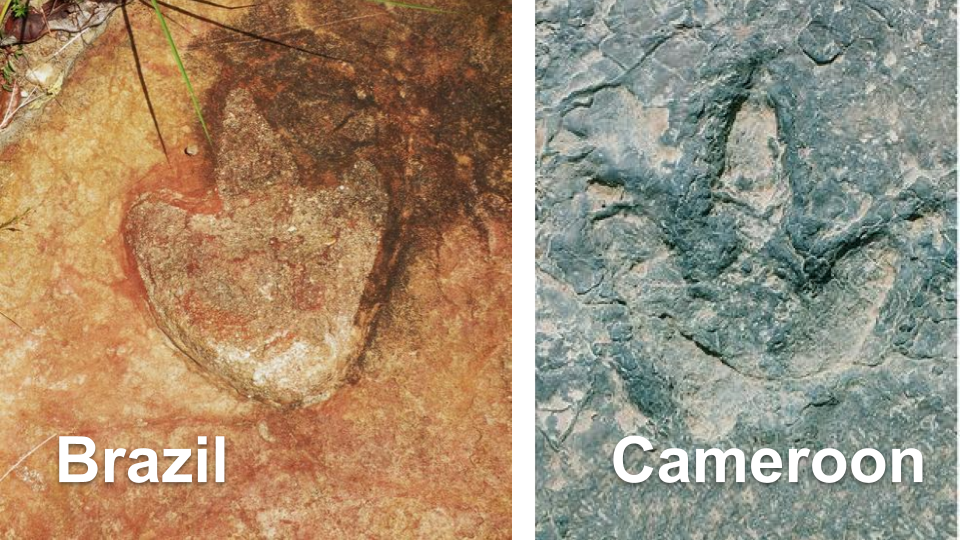
One of the reasons we study the Moon is to help us understand the history of our own planet Earth. The shifting continents and weather patterns of Earth join forces to erase our world’s history. Occasionally, however, our planet reveals its past through the rocks beneath our feet.
Rocks that may once have been beneath dinosaurs’ feet.
In one of my favorite stories of the year, paleontologists studying dinosaur tracks in Brazil and Cameroon – on opposite sides of the Atlantic Ocean, have a discovered fossilized game trail created by 3 toed theropods. The footprints on both sides of the ocean are the same age – 120 million years – and were formed when the two now separate continents were snuggled together. According to Louis Jacobs, who found the tracks, “The two continents were continuous along that narrow stretch, so that animals on either side of that connection could potentially move across it.”
This research is just one piece of data showing how the two continents once matched together. Their separation was driven by the constant movement of our planet’s continental plate. To either side of this connection were rift valleys that began to form 140 million years ago when the super continent of gondwana began to break apart.
These kinds of motions continue today, and we can see this kind of continental fragmentation in the Great Rift Valley that sprawls across Ethiopia and Kenya, as well as in the geologic rifting from the Red Sea through to Turkey. It’s kind of amazing to think that someday, it could be the human tracks from one continent to another that will be studied.
Featured dinosaur prints image credit: Ismar de Souza Carvalho
